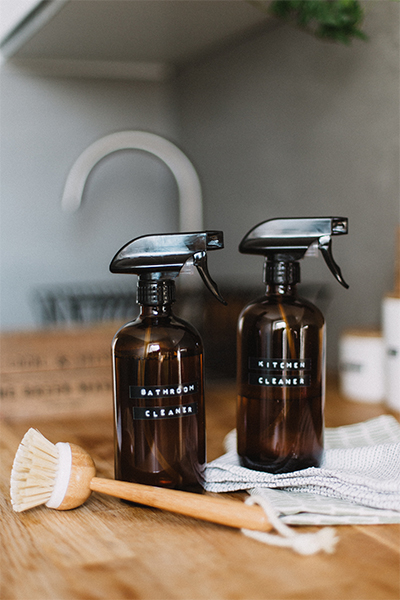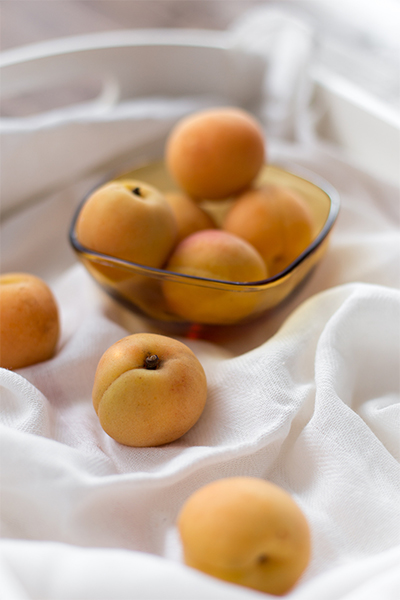The beds are made, the dishes cleared, the clothing folded and put away, but do you know how clean — and healthy — your home really is? Research has shown that the air within homes can be deadlier than outdoor air. “Walking into a modern building can sometimes be compared to placing your head inside a plastic bag that is filled with toxic fumes,” says John Bower, founder of the Healthy House Institute. Among the most harmful toxins that can lurk inside your home are lead and pesticides, which studies have linked to brain and central nervous system damage, asthma, and even behavioral problems.
So how can you avoid excess exposure to these harmful toxins, dust, and chemicals? Here are seven things you can do right now to reduce the danger in your home.
1. Make a “no shoes inside” rule — and stick to it
Take a walk around the block and you’re bound to unknowingly step in bird poop, a plant sprayed with pesticide — or worse. Research conducted at the University of Arizona found that a pair of shoes carried an average of 421,000 bacteria, including harmful strains such as E. coli and Serratia ficaria, which can cause respiratory infections. Shoes are also known to bring unwanted pesticide residue into the home while people who live near asphalt roads sealed with coal tar have an increased risk of cancer from toxins, likely because asphalt toxins were carried into the home on shoes. The small act of taking off your shoes will not only keep your house healthier, but you’ll also find that your floors will stay clean much longer, too. Place a bright mat for shoes at your threshold as a colorful reminder to family and friends to leave shoes at the door.
2. Dump the non-toxic cleaners and make the switch to environmentally responsible brands

How’s this for a scary statistic: Research published in the American Thoracic Society’s “American Journal of Respiratory and Critical Care Medicine” found that cleaning your home once a week can lead to lung damage equivalent to smoking 20 cigarettes a day!
Switching to non-toxic, environmentally safe cleaners is an easy way to reduce dangerous, unnecessary chemicals in your home — and in your lungs. Swapping out the harmful stuff can help decrease allergens, and even prevent chronic illness down the road. Here are 10 recipes for all-natural cleaning solutions you can mix up and use at home.
3. Trade Teflon and other non-stick pans and utensils for stainless steel or cast iron
Teflon® is a brand name for a man-made chemical known as polytetrafluoroethylene and is commonly used as a non-stick coating surface for pans and other cookware. Studies in lab animals have found exposure to PFOA, the chemical agent used to make Teflon, increases the risk of certain tumors of the liver, testicles, breasts, and pancreas, and The International Agency for Research on Cancer has classified PFOA as “possibly carcinogenic to humans.” Trading your Teflon/non-stick pans for stainless steel or cast iron is another easy way to reduce your home’s toxic load.
4. Choose plastics wisely — and use them sparingly

Bisphenol A (BPA) is a chemical used to harden plastics. Studies have demonstrated a possible link between BPA exposure and increased risk of cancer. Whenever you can, avoid plastic food packaging and plastic wraps and always microwave food in glass containers. Recycle plastic products in your home, and make a point of purchasing only glass or BPA-free plastic items in the future.
If you need more motivation to ditch plastic completely — even the BPA-free kind — consider this sad fact from Chicago’s Shedd Aquarium: Roughly 19 billion pounds of plastic pollute the world’s oceans every year. So when you reduce your reliance on plastic at home, you’re not only making your home less toxic, but you’re also contributing to a healthier home for our world’s marine life.
5. Banish dust
More dust means more toxins. And you can’t just dust those surfaces with a dry duster — turns out that just spreads the dust around. The American College of Allergy, Asthma & Immunology recommends mopping all floors and wiping down all surfaces with a damp cloth. Make sure your vacuum cleaner has a HEPA filter that you clean regularly, and if you have carpet, consider replacing it with hard flooring that harbors less dust. Clear out dust-accumulating clutter — and be sure to donate anything that’s not trash to organizations that can use it.
6. Check your home for dampness and water leaks
What do water leaks have to do with maintaining a toxin-free home? Excess moisture encourages the growth of mold and mildew, both of which can have signficant negative effects on your overall health. Check your home for areas of constant dampness or leaks — bathrooms and basements are common culprits — and be sure to take a look around showers and tubs and beneath sinks. Deep clean any surfaces where mold might find a damp home and fix any minor water leaks.
7. Clear the air

We’ve already told you that indoor air can be deadly. In fact, it is typically two to five times more polluted than outdoor air. Clear the air in your home by opening your windows, whenever weather permits, for ventilation. Green plants can add style to your space in addition to serving as the best natural air detoxifiers in town — a NASA study found that several common houseplants may actually remove carcinogenic chemicals like benzene and formaldehyde from the air. Some plants are better air-cleaners than others, with spider plants, Boston ferns, and English Ivy among the top performers.
There’s No Place Like Home
As you think about ways to make your home healthier, take a moment to think of those who don’t have a safe space to go home to. These 25 amazing nonprofit organizations are committed to improving the lives of poor, low-income, and homeless individuals and families in Chicago. Whether it’s providing a safe environment for victims of domestic violence, giving people the tools and information they need to make better financial choices for their future, or simply being there for someone when they have no one else to turn to, these organizations truly are making a safe place to call home more attainable to those in need.
Feature photo by Sarah Dorweiler on Unsplash.
More from Make It Better:
- Best of 2018: Home & Design
- 10 Organizing Secrets Pros Don’t Usually Share for Free
- Take a Peek Inside Chicago Author Stacey Ballis’ Restaurant-Quality Kitchen
 Amy Bizzarri is a Chicago-based freelance writer focused on food and travel. She has a keen interest in Chicago history and is the author of “111 Places in Chicago That You Must Not Miss” and “Discovering Vintage Chicago.” Amy is also a proud member of Shot@Life, a movement that works to ensure children around the globe have access to the vaccines they need.
Amy Bizzarri is a Chicago-based freelance writer focused on food and travel. She has a keen interest in Chicago history and is the author of “111 Places in Chicago That You Must Not Miss” and “Discovering Vintage Chicago.” Amy is also a proud member of Shot@Life, a movement that works to ensure children around the globe have access to the vaccines they need.

